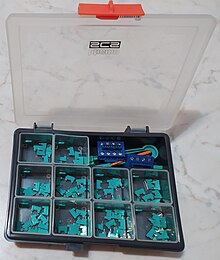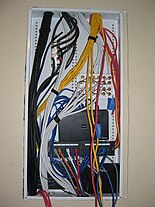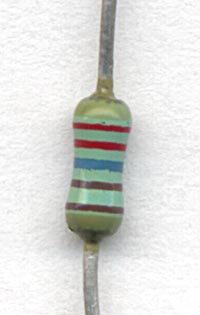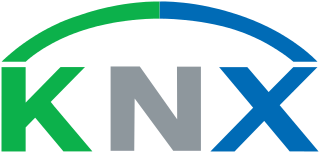General features
An SCS bus is based on a sheathed twisted pair formed of two flexible conductors; these are braided and unshielded with isolation 300/500V, SELV as double isolation is required – according to the rules adopted by CEI (International Electrotechnical Committee). The bus is unpolarized, devices are required to support the DC power supply in both polarity.
Wiring
Two kind of wiring are possible:
- Free cabling were a mix of bus and star topology are present, better for old houses
- Star wiring were all devices are connected to the switch rack, better for new houses
Communication
Across the SCS bus four different types of signals are transmitted in frequency modulation:
- Electricity supply via 27 Vdc
- Data with a frequency clock of 9600 Hz
- Sound
- Video
The transmission protocol is the CSMA/CA.
Functions
Through the SCS bus you have the following functions:
- Light control
- Automation
- Sound diffusion
- Energy management
- Thermoregulation
- Video intercom
- Alarm system
All the listed functions share the same technology and the same procedures for configuration / installation.
Configuration
All devices connected to SCS bus must be manually configured, no autolearn is possible, apart Alarm system and extenders. Configuration assign an address and an operating mode. Two kind of configurations are possible:
- Physical - using numbered jumpers with different values resistor. Those are custom made devices and packages.

SCS physical configurators digits - Virtual - using a configuration software connected with an ethernet gateway. In this case the address and operating mode are written in a non volatile memory in every device. Applying a physical jumper override the virtual configuration wiping the memory.
Addressing details
Device addressing use three different 'digits' A|PL|GR. The A mean the room, the PL is the Point of Load in the room, and GR is the group. Group join loads in same or different rooms in a logical manner. Not all devices has group addressing. All devices must answer to room broadcast called AMB. All devices must answer to general broadcast called GEN. Physical and Virtual addressing has different limitations:
| digits | Physical | Virtual | note |
|---|---|---|---|
| A | 0-9 | 0-10 | 11 rooms max in a single SCS domain |
| PL | 1-9 | 0-15 | A=0,PL=0 is forbidden, so 175 loads are addressable in a single SCS domain |
| GR | 1-9 | 0-255 | group |
Writing physical addresses use 2 digits. Writing virtual addresses use 4 digits. In big houses and buildings, SCS address extension is possible, were different address domains are connected via some bridges. Only some kind of messages can cross a bridge. Here the values of physical configuration jumpers:
| marking | color | value | code | description |
|---|---|---|---|---|
| <empty> | --- | infinite | --- | default to virtual |
| 0 | green | 4659 kOhm | 3501/0 | digit |
| 1 | green | 817 kOhm | 3501/1 | digit |
| 2 | green | 673 kOhm | 3501/2 | digit |
| 3 | green | 556 kOhm | 3501/3 | digit |
| 4 | green | 471 kOhm | 3501/4 | digit |
| 5 | green | 389 kOhm | 3501/5 | digit |
| 6 | green | 329 kOhm | 3501/6 | digit |
| 7 | green | 271 kOhm | 3501/7 | digit |
| 8 | green | 218 kOhm | 3501/8 | digit |
| 9 | green | 179 kOhm | 3501/9 | digit |
| GEN | blue | 100 kOhm | 3501/GEN | general broadcast |
| GR | blue | 68 kOhm | 3501/GR | group broadcast |
| AMB | blue | 33 kOhm | 3501/AMB | room broadcast |
| AUX | blue | 2.2 kOhm | 3501/AUX | auxiliary channel |
| ON | blue | 120 kOhm | 3501/ON | send ON command |
| OFF | blue | 150 kOhm | 3501/OFF | send OFF command |
| 0/1 | blue | 180 kOhm | 3501/01 | send toggle command |
| PUL | blue | 2.2 kOhm | 3501/PUL | button command monostable |
| SLA | blue | 120 kOhm | 3501/SLA | slave of another control |
| CEN | blue | 33 kOhm | 3501/CEN | advanced scenarios mode |
| ↑↓ | blue | 100 kOhm | 3501/T | up/down for shutters |
| ↑↓M | blue | 68 kOhm | 3501/TM | up/down for shutters monostable |
Note: It looks like the values of the configurators are measured, not from any official table. Resistor values are not between short difference. E.g. "4", it is in this table 471 kohm; if resistor is 1%, it is about 470 k ... 479 k. The original table from year 1999/2000 says: 0 = 4,7M, 1 = 825k, 2 = 681k, 3 = 562k, 4 = 475k, 5 = 392k, 6 = 332k, 7 = 274 k, 8 = 221k and 9 = 182k. All these values are found in the standard "E"-resistor value table (EIA E96) but not uniformly spaced (is that correct?). Resistor values in this list are official. However the table values above are useful because all the values fall inside the 1% resistor tolerance area specified by E96 (except value 3501/9 measured at 179k - a second example tested also gave a reading of 179k).






